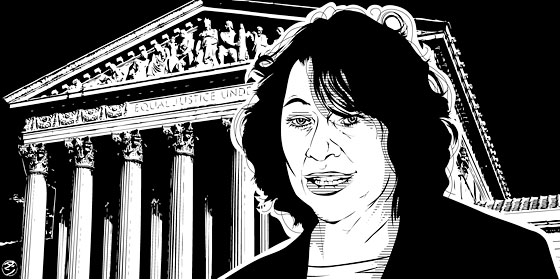
When Sonia Sotomayor issued her most famous ruling, the 1995 injunction that ended the longest strike in pro-sports history and “saved” the impending major-league baseball season, she didn’t indulge in tortured sports metaphors or rhapsodize at length about her love for the game—unlike so many of her judicial colleagues in similar cases. Instead, she briefly mentioned where she’s from. “You can’t grow up in the South Bronx,” Sotomayor said, “without knowing about baseball.” And then she got directly to the legal point.
Superior intellect and inspiring biography are nice qualities in a Supreme Court justice. What’s especially heartening about Sotomayor, however, is that she’s rooted in real, physical, urban life. That connection gives her thinking a bracing, commonsense clarity. The Supreme Court has always been a weird place, the closest government institution to a mystic cult, and in recent years, thanks to Republican appointments, the atmosphere has grown even stranger, more academic and detached, dominated by “originalists” and paranoids who seem to hate the modern world as it actually exists and who want to take the country back to some idealized past, before all those whiny minorities spoiled things. With Sotomayor, for a change, the court would be getting someone more Williamsburg, Brooklyn, than Colonial Williamsburg.
Which is not to say she’s some power-to-the-people radical. She’s certainly a first-class brain, and she’s already a member of a rarified elite. On the surface, her adult path appears strikingly northeastern Establishment: Princeton, Yale Law, Manhattan D.A. office, a midtown corporate law firm, and crucial support from Pat Moynihan and Al D’Amato. Yet Sotomayor is also the product of a widowed mom, childhood diabetes, chain-smoking, divorce, and the bleacher seats at (the original) Yankee Stadium. Not to mention her family’s move from Puerto Rico to public housing in the Bronx. It is these biographical markers—and Sotomayor’s frank acknowledgment of their importance—that scare her conservative enemies. The retrograde right is readying its tired attacks: Jeff Sessions, an Alabama Republican senator, claims to be “uneasy” with her judicial record—but he’s also worried that Obama’s appointments could shape the court “in a way that would be different from our heritage so far.” Sessions and company would like to keep that “our” narrowly defined. But Sotomayor’s life story is the real American heritage; it’s about looking forward and breaking ground, not fencing it off to newcomers. In Washington, she’d be joining a powerful club that often seems intent on not just respecting the ideas of the Founding Fathers but turning back the clock to the good old days of 1787. Consider: Sotomayor entered Princeton only a couple of years after the university opened its doors to women. One of her prospective Supreme Court colleagues, Samuel Alito, Princeton ’72, belonged to a group that opposed admitting co-eds. Chief Justice John Roberts, a scarily disciplined conservative, comes from a world where racial inequity doesn’t exist, and he seems to have trouble believing it exists for anyone. Antonin Scalia grew up in Elmhurst, Queens, but left the city in 1953 and seems to have dwelled in an abstract gated community of the mind ever since.
Sotomayor’s fresh perspective will be as much generational as ideological. The average age of the current justices is 69; Sotomayor would tie with Roberts as the youngest, at 54. Yet Supreme Court justices have a way of confounding expectations. David Souter wasn’t nearly as conservative as President George H. W. Bush had hoped he’d be. Sotomayor may not turn out to be a dependable liberal; extrapolating her positions on certain contentious issues, like abortion, from her judicial record is difficult. But Sotomayor’s New York pragmatism will change the ball game.
Have good intel? Send tips to intel@nymag.com.